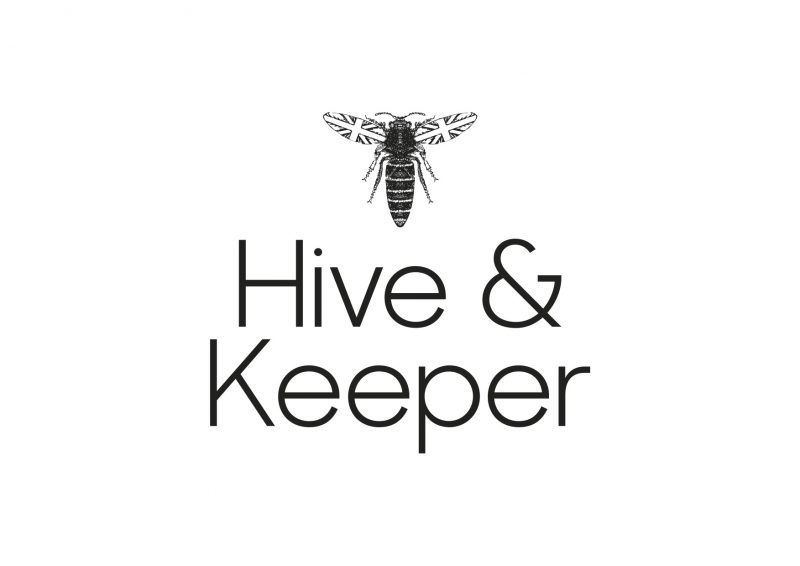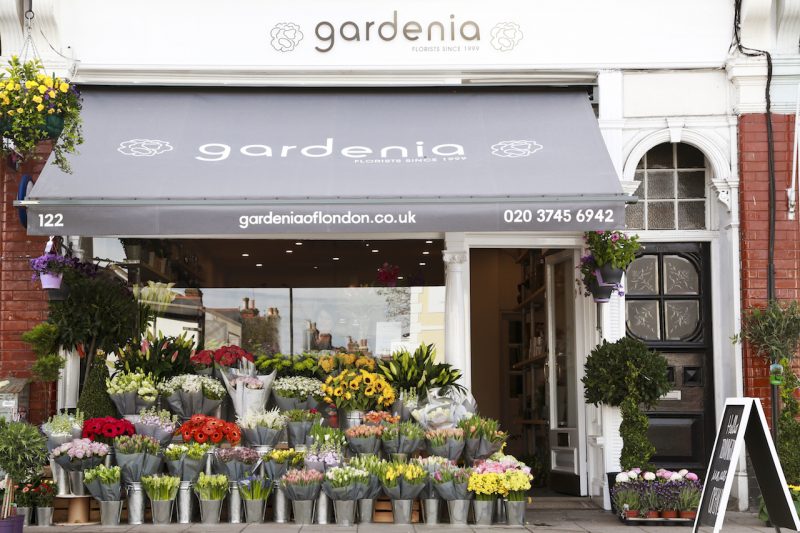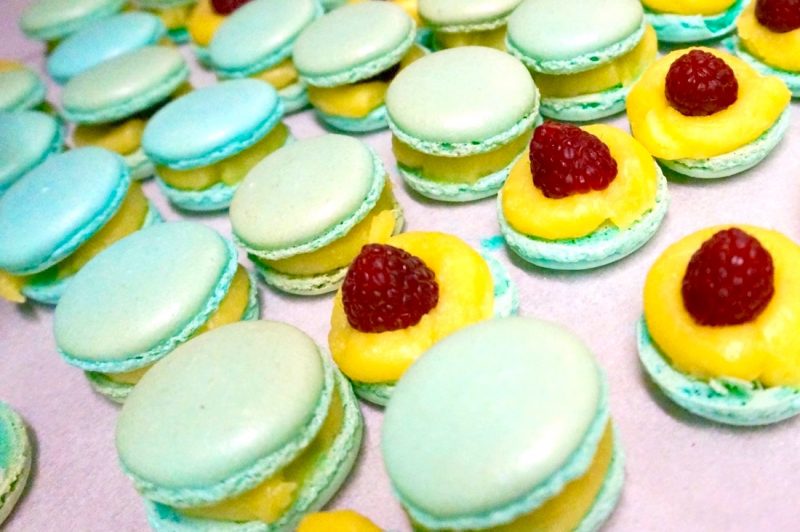
We Love Local: Hive & Keeper
- 1.We Love Local: Belleville Brewing Co.
- 2.We Love Local: Bellevue Tea
- 3.We Love Local: Gardenia of London
- 4.We Love Local: Great Bakes
- 5.We Love Local: The Whisk Fairy
- 6.We Love Local: Hive & Keeper
I chanced upon Emily’s pop up stall in Wandsworth and tasted a few of Hive & Keeper’s honeys. I was struck by the fact that although some were from hives less than a mile away from each other, they were all very different in taste and texture, as well as being delicious. I love ‘all things local’ and anything to do with food, so I jumped at the chance to find out more..
How long has Hive & Keeper been going for?
The idea started developing in the summer of 2014, and finally came together as Hive & Keeper in January 2015 – a long way of saying I’m just over a year old.
What led you to want to bring local honey to market?
The idea for Hive & Keeper came out of my beekeeping hobby: I’ve always loved insects and used to collect dead ones when I was little. One of my best childhood memories is sitting in the spring sunshine in our London garden, me, my mum and Grandma in a row of deck chairs with the bees buzzing around behind us, the sun on our faces, eyes closed, warming our bones. I think that’s where I trace my bee-love back to!
I took up beekeeping a few years ago, really because I wanted to have more time just watching what they did and learning about them: but it’s so much more than that. I work in market research, making the daily commute to and from the office, enjoying it – but you know how you take the same route every day, have the same rhythm to your day, have your head full of the to-do list, thinking about it as you walk between home and station etc. Well beekeeping actually breaks that cycle; you have to notice the world around you, the weather, looking up to see the signs of rain or overcast and temperatures falling, winds picking up; looking down at your feet and how plants are doing, seeing dandelions turn up their heads so they get enough sunshine to produce nectar for my bees, to seeing when spring comes – is it too early to sustain my bees until the season gets really under way? My eyes are now wide open – I see so many small changes – and I’m making myself slow down and notice even more as all of these things play a part in my bees’ lives.
And what’s so incredible is that all of the vagaries of nature that my bees have lived through in the days leading up to them ripening and sealing their honey crop is reflected in its taste, texture and colour. No two hives, however, close together, and no two honeys, however, close in time they were made harvested, taste the same. I love how the taste of a spoonful of pure raw local British honey opens my eyes to our world and connects me back through the honey, the keeper and their bees to the natural world that I spend so much of my day to day life blind to. Sharing this with others so they too can have the fun, and amazement of discovery and connection back to the natural world around us is what Hive & Keeper is about.
How many bees do you keep?
I’ve got two hives in my back garden which in the summer when the colony is at its largest probably has 50-70,000 bees. This year I got about 70 jars of honey from my two hives which I sold through Hive & Keeper – one came from my queen ‘strawlegs’ hive and had a floral nutty taste to it and set fairly quickly. The other one came from my queen ‘haylegs’ hive and was spicy and caramel in flavour and runnier. These differences amazed me as they are about 6 feet apart from each other and the honey is taken off at the same time!
What makes the taste and consistency vary so much from area to area?
That’s the amazing thing – honey doesn’t change just from area to area, but from hive to hive, and week to week! I’m lucky enough to have two honeys taken from the same hive but just days apart, they’re from a lovely beekeeper, Martin Taylor in Goxhill, North Lincs near the banks of the Humber. One was taken off the hive at the end of June and the other less than 3 weeks later, and despite such little difference in when they were harvested, the honey’s taste has still changed going from a light spicier flavour to a more citrus one. I sell them as a pair so people can experience the differences just a few days, different weather and forage make to a honey.
It also becomes more obvious as to why honey from hives right next to each other taste so different when you hear that over a million visits to flowers goes into each jar of honey! Think of that scale and it’s not difficult to see how the combination of visits can vary so easily resulting in different tasting honeys.
The difference in consistency you’re talking about is how the honey crystallises – some stay runny for absolute ages, others set almost rock hard in a sugary grainy way while others do it in a creamier way. All raw (i.e. untreated and pure) honey will crystallise as it’s the natural process of the glucose within it beginning to knit together as it reaches the air having been sealed with wax by the bees in an airtight cell. The speed and way it crystallises will vary depending upon its glucose makeup. If a jar of honey you have at home has crystallised don’t throw it away, you can gently warm it at about 30c and it will return to its original runny state, this is the temperature bees keep their hives at so not too hot to damage the enzymes in your honey.
I noticed some statistics on your website – ‘There are 230,000 independent hives in the nation’ That’s a lot of hives – has there been a sharp rise in people keeping bees?
Good question! I’m not sure about the national picture but urban beekeeping is growing in popularity, and especially in London. I gather from the Bee Farmers Association that as an industry (rather than a hobby) it’s declining as the average age of a commercial beekeeper is 66 yrs old. To help turn the tide the British Beekeepers’ Association (BBKA) has set up apprenticeship programme to encourage young people to take it up as a career – I was rather fed up to be out of their age bracket as it sounds tremendous fun! Although my hands are full with two hives so I’m probably better off helping to support British beekeepers through Hive & Keeper than managing 200+ hives badly!
Whilst doing my research I got the feeling that beekeeping has become well and truly ‘cool’. You can do things like adopt a beehive, go on a bee-keeping course and attend spring conventions dedicated to bee-keeping. That said, only 6% of honey sold in the UK is made in Britain. How do you see the UK honey industry changing in the future?
Of course, beekeeping is cool! How cool is it that bees maintain the colony’s resilience and genetic diversity by ‘smelling’ bad eggs and chucking out any that fail the test? Or how amazing that they’re the only creature to have developed symbolic movements as a language; the waggle dance a bee does when coming back from a particularly good forage patch tells her workmates where to go and find it, how far away and in what direction.
The British love honey; we buy around 25,000 tonnes of it each year with 1,500 tonnes from the UK’s 200 commercial beekeepers, the rest is imported and mainly from China. As always with globalisation money talks and countries such as China, that have the space to keep bees as enormous commercial concerns with several thousand hives in a single area, will always beat UK bee farmers on cost.
However, not all is lost for the UK’s biodiversity and honey production. We have apprentices coming through the system, and a thriving local beekeeping community of 44,000 amateur beekeepers keeping around 230,000 hives across the UK. It’s the local beekeepers like me that Hive & Keeper supports and encourages. Hive & Keeper is giving local beekeepers an outlet and a marketplace for their honey. Many of my beekeepers are selling their honey to make a bit of money and fund their hobby so they can replace old equipment and develop their apiaries, all of which helps to ensure the health of our native bee population and biodiversity. Their passion for bees is important to me, as is how they look after their bees and their approach to bee husbandry, I’m delighted that Hive & Keeper is able to give good local beekeepers a showcase and income.
Why should we try to buy local honey over the well-known brands?
In no particular order: look at the small print on the honey label to see where it’s from and most will be a blend of EU and non-EU honey. Everything that is incredible about honey is lost by blending it, all the magic and individuality, everything that connects you back to the natural world and to the sense of place is lost. Honey is pasteurised to stop runny honey crystallising and to kill active enzymes. Pasteurised honey has no active enzymes; honey is an incredibly complex food with so many elements to it which pasteurising ruins. Look out for ‘raw’ honey instead (honey from local beekeepers is highly unlikely to be pasteurised as that’s a commercial process. The EU is in the process of conducting a study looking at honey fraud and preliminary findings have found evidence of sugar being added and of honey being misrepresented, e.g. a lavender honey not having predominantly lavender pollen in it. Hive & Keeper beekeepers aren’t adding sugar, I’ve met them all – hearing about the hive their honey came from, where it is, the forage around it and when the beekeeper took the honey off. I’ve walked around the forage areas taking photos for the website and of the keeper too – check them out!
How long is the honey making process?
Bees can fill frames of honey in days when the nectar flow is on. Each week I can be adding another layer of frames (called a super) for the bees to fill with nectar, and then cap with wax when the water content in the honey has been taken down to 20% or less. At this concentration the honey will last forever so can be stored by the hive for future use. Beekeepers give bees more space than they need for storing honey, which means they produce more than the hive needs to last through winter. Beekeepers will take this surplus honey off during the summer months from May to August, making sure that there’s always enough honey stores for the bees. Once the honey is taken from the hive then he processing is straightforward and quick – just sticky! The wax capping the bees have used to seal the honey to preserve it needs to be sliced off and then the frame full of dripping honey is put in a large salad spinner type drum. You spin like mad and honey flies out, drips to the bottom of the drum and is then poured through a sieve to take out lumps of wax and bee – but everything else like pollen can get through. That’s it! Ready to jar, label and enjoy.
How does our great British weather affect the honey?
Hugely! Day by day it makes a difference; if it’s raining or too chilly and windy the bees won’t fly. Last summer was fascinating as we had rain when the horse chestnut was in bloom which meant that a hugely important nectar source couldn’t be gathered by the bees, so blackberry became predominant with the beekeepers I met up and down the country all saying their honey was darker last year than any other. Usually, cold winters mean the bees huddle together to keep warm and conserve energy, with the queen stopping laying eggs until the spring comes. This winter has been very mild, though, with bees flying on warmer days and the bulbs all out early. The bees have been taking pollen back into the hive – a sure sign that there are already young to feed inside, as a result we’re all expecting a bumper spring with our colonies bursting forth as soon as we have a few warm days.
Is it true that eating honey from your local area helps with hayfever?
I think it must do as so many people swear by it and come and search me out as they have found it makes a huge difference to their health. Honey is an extraordinary thing and I’m not sure we’ve really worked out why or how. What has been shown are its anti-bacterial and anti-inflammatory and anti-oxidant properties.
What’s your favourite honey?
Mine! And in particular, the first taste of it when I slice the wax cappings off the frame.
Is Manuka honey really that good for you?
Yes. Normal raw honey has antibacterial properties due to the hydrogen peroxide it contains. However, this is easily destroyed by heat and light, which is another reason to stick with raw unpasteurised honey. Manuka honey though has both the natural hydrogen peroxide antibacterial property and its own natural Unique Manuka Factor (UMF) which gives it increased antibacterial potency. The UMF property is also very stable, the higher the UMF number on the jar the stronger its anti-bacterial properties.
Strangely enough my name (Deborah) means ‘a bee’.. what does yours mean?
Apparently Emily means hard working, which explain why I’m always busy as a bee!
To bee or not to bee? (sorry couldn’t resist, especially after seeing your FB Christmas carol quips)
I had to turn to others to show how the answer is always ‘too bee’ – and has been for generations:
‘The men of experiment are like the ant; they only collect and use. But the bee…gathers its materials from the flowers of the garden and of the field, but transforms and digests it by a power of its own.’
Leonardo da Vinci
‘A work of arte; and yet no arte of man,
Can worke, this worke, these little creatures can’
Geffrey Whitney, 1586.
‘A Bee is an exquisite Chymist [chemist]’ Royal Beekeeper to Charles II
Lastly, I’m sure what everyone wants to know is – have you had any work related bee injuries!?
No! Other than stings. I tend to swell up rather attractively which gave me a weird botox look last season when I got stung on my forehead. I’m not good with sting’s so my bee suit is XXL which means the material keeps the bees miles away from my skin. It’s helped to reduce the number of times I get stung.
Thanks Emily, you’ve ‘been’ great! (ahem, had to do it)!









You must be logged in to post a comment.